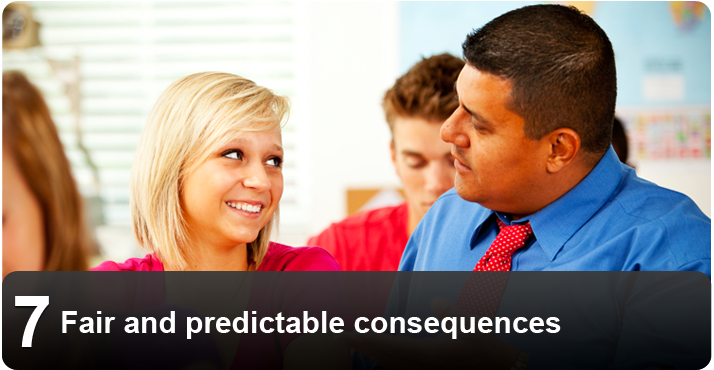|
Table of Contents
|
 “Even the most skilled [school staffs] need to include clearly defined and articulated consequences within [their school] discipline plan. Although necessary, consequences should be the least-used component of the plan.” – Mark Boynton and Christine Boynton, The Educator’s
Guide to Preventing and Solving Discipline Problems Students learn to comply with school-wide expectations and routines though direct and differential feedback about the acceptability of their behaviour. School staff employ differential feedback when they provide clear limits, use positive reinforcement and give corrective feedback to make the boundaries of acceptable and unacceptable behaviour obvious to students. Effective feedback is given consistently across school staff, throughout the school day and across school settings. Simply punishing specific types of behaviour may not result in long-term behaviour change or help students to learn new behaviours and skills. Research shows that punishing problem behaviour without a school-wide positive support system results in increased:
In addition to rewards and reinforcement, a school-wide system needs a continuum of fair and predictable consequences for negative behaviour. The consequences for minor types of negative behaviour can be natural and easily implemented procedures such as low-key corrective feedback. For more serious negative behaviour, the consequences involve more comprehensive and intensive procedures that require advance planning for individual students. Examples of corrective consequences:
Giving corrective feedbackGenerally, the continuum of negative consequences begins with corrective feedback, that can include:
Encouraging self-reflectionSelf-reflection refers to sending a student out of the classroom for a time to reflect on his or her actions and make a written plan for better choices in the future. Through written self-analysis, students think about:
Self-reflection can take place immediately after a negative behaviour occurs, and it is easy to implement. It can serve as a powerful warning, and it gives students a chance to calm down. It often eliminates the need for an office referral. To make this approach work, have a supervised area where students can go as required, and have a receiving teacher available to:
Staff should work together to set up a self-reflection system, develop behaviour reflection forms and identify which kinds of negative behaviours are best addressed in this way (by analyzing data collected throughout the process).
|


